I reckon I must have tried out at least a hundred memory games with the children I have taught over the last ten years. At least one hundred, but maybe more!
However, out of all those games, the following 22 really stood out. These are the ones children will ask for time and again, and will help them develop lots of skills alongside memory also.
Developing children’s memory will have a large impact in many areas of their life. It is a crucial part of the following:
- Learning how to read. Memory helps them to learn letters and sounds, and also remember key sight words
- Recognizing numbers, and developing other maths skills
- Remembering and making sense of their lives
- Understanding events as they happen to them
- Acquiring knowledge
- Learning skills more quickly, and remembering what they have learned
In a world of technology, these fun games are also more and more necessary with each passing year.
Also, most of these games can be played either at home or in school or preschool. They are roughly for chidren aged 3-5, but can definitely be done by older chilren as well. Good luck if you give any of them a go!
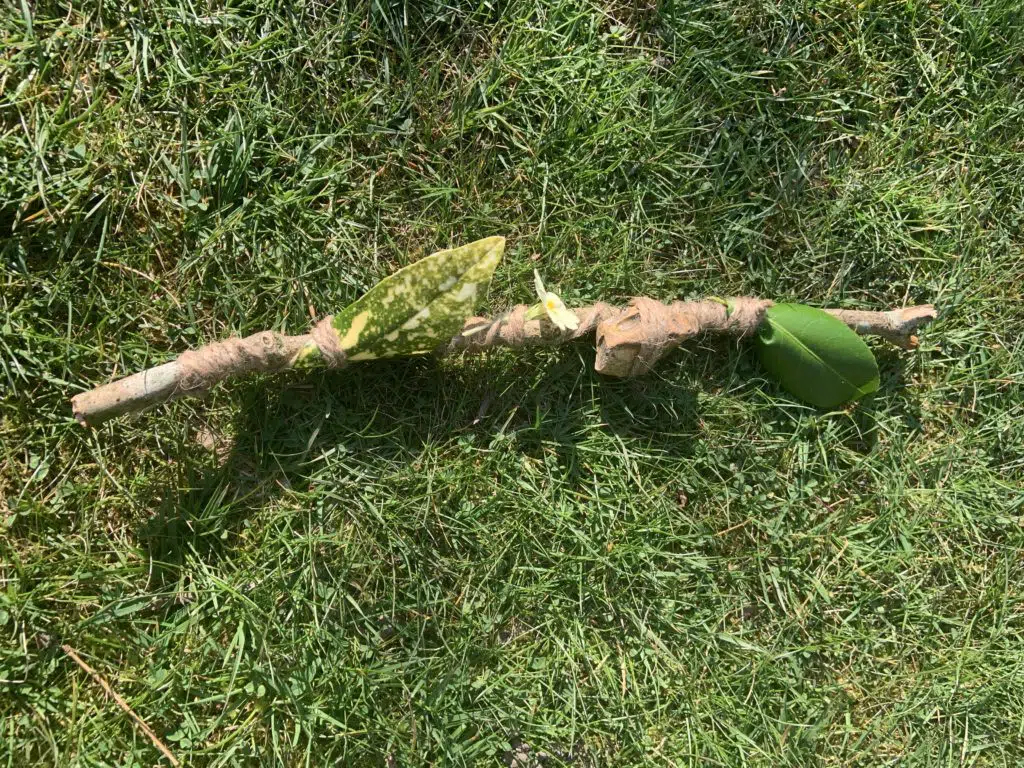
1.Bug In A Rug
Resources – One sheet, rug or parachute
This is good to play either with a parachute or a big sheet. The children all sit around it and close their eyes.
What you do is either the adult or one child that has been selected as the tagger, will tap a child on the shoulder. That child opens their eyes and goes to hide underneath the sheet or parachute.
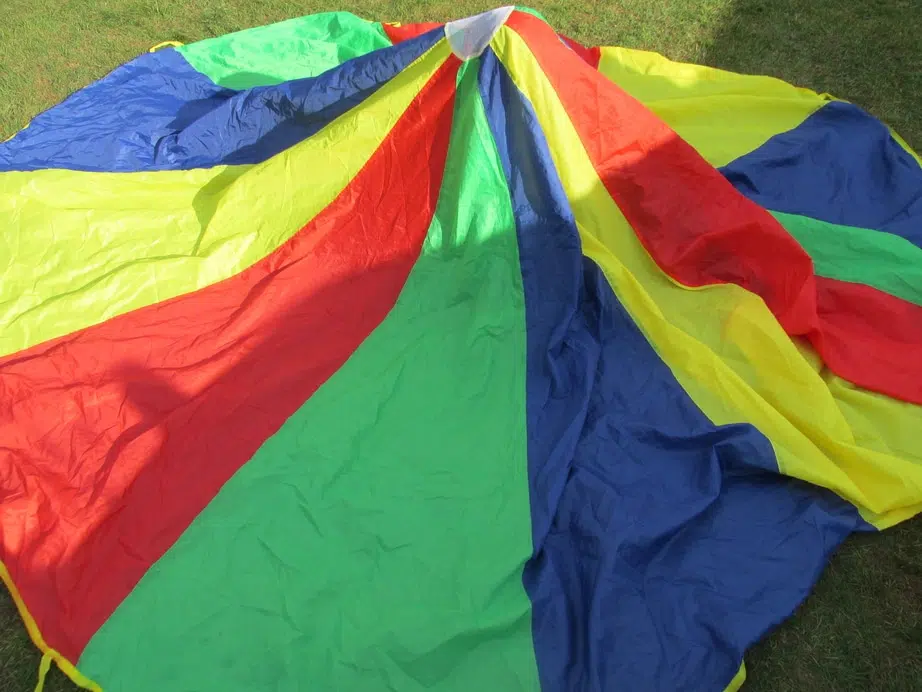
Then everyone opens their eyes. The idea is to guess who is under the sheet. It is all about memory and trying to remember who is sitting where.
2. Jungle Story
Resources – feely bag or box, toy jungle animals, a box (to put the animals in)
This is a memory circle game. It works best for about 3-6 children, but you could potentially do it with a few more if they have really excellent memories.
The first person puts their hand into the bag, takes out an animal (e.g. an elephant), and says ‘At the zoo I saw an elephant.’
They pass the bag to the next person who says ‘At the zoo I saw an elephant, and a …(whatever they take out, e.g. a lion)
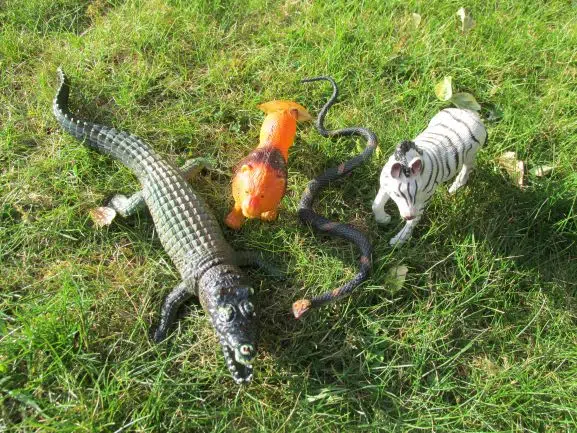
Continue on like this, with each child continuing the string.
Top tip – The easy way of doing this game is to put the animals in the middle so everyone can see them. The hard way is to each put them in a box so you just have to remember.
3. Robber Game
Resources – sheet, some random objects, (optional – a robber’s mask)
This is a simple memory game, that they really enjoy. Pick one child to be the ‘robber’. They could wear the robber’s mask if you would like!
Have at least three objects, show the children, and then put a sheet over the top of them. Then everyone closes their eyes. The robber sneaks up, robs an object and puts it behind their back.
Then everyone opens their eyes and take the sheet away. Try to guess what has been stolen! Start this game with three objects, but if they get really good then expand the number.
The is a great game for early phonics if you do it objects that start with the same letter or objects that rhyme. For 16 more fantastic alliteration games check these out.
4.Rhyming Train
Resources – A bag of rhyming pictures, a box
This game is a bit trickier. Sit in a circle and one at a time people put their hand into the bag and take one out (e.g. a cat). They say, ‘I saw a cat.’
Next person takes one out (e.g. a hat) and says ‘I saw a cat and a hat.’
Continue like this, building up the rhyming string.
5.Team Draw A Picture
Resources – one large picture drawn in advance by the adult, pieces of paper, pens
Well in advance the adult will draw a large picture on a piece of paper. It could be anything with lots of detail in, for example an alien face with loads of eyes and other features. Or it could be a house with lots of detail, or a fish bowl containing lots of different things. Here is an example of one I created:

When you play the game, put the piece of paper somewhere where they can’t see it.
Split up into teams of about three. Give each team a piece of paper and some pens.
The idea is that one person from each team will go and take a look at the picture (wherever you have hidden it) come back and start to draw it. Then the next person in the team will go, come back and try to help them. Then the next person goes.
The idea is to try to copy the picture pretty much exactly on your piece of paper. They can go and look at the picture as many times as they want. There will be lots of memory, debate and cooperation involved.
6.Copy The Sound
Resources – nothing
This is a much simpler memory game. It is good for speech and language, and memory.
Sit in a circle. The adult starts. They make a noise towards the first person in the circle. That person tries to copy the sound to the person next to them. They continue to pass it round the circle.
This is a great one for eye contact, which is a big target for many young children. For many more eye contact games, take a look at this article containing 12 fantastic ideas.
7.Pairs
Resources – some simple playing cards
This is the classic card game that is brilliant for young children and for developing memory.
Have some kind of cards – something with pictures on would be perfect, like different animal cards, or superhero cards, or something like that.
Start with only a few pairs, maybe five sets. The first person goes, picking up two cards, and checking what they are. If you get two the same you keep them. If they are different you put them back. Then the next person goes.
The winner is the person at the end that has the most pairs.
8.Three Cups
Resources – Three cups (not surprisingly), something to put under it like a pompom.
This is a classic street trick. Put the pompom (or whatever you’re using) under a cup. Move the cups around quite a bit to try to trick the other person. Then line them up in a row.
One child will try to guess where the pompom is.
9.Copy The Facial Expression
Resources – nothing
This game starts really easy, but it can get progressively harder. It is excellent for memory, but also good for eye contact and understanding about emotions.
The easiest version is as follows: the first person in the circle does an emotion face, e.g. a happy, sad, angry or shocked face. Everyone copies. Then the next person goes.
Medium version: the first person does a sequence of two faces, for example sad then happy. Everyone copies – sad then happy. Then the next person goes.
Hard version: the first person does a sequence of three faces. Everyone copies!
There are lots of similar excellent ideas to this in this article – 21 preschool circle time games that actually work!
10.What Did You Change?
Resources – some different hats, coats, and scarves
This is really good fun. One child comes into the middle of the circle. They put on one hat, one scarf, and one coat.
Then everyone closes their eyes.
The child in the middle swaps just one item of clothing. For example, they might change their hat. Then everyone opens their eyes and tries to guess which item they changed.
11. Picnic Game
Resources – feely bag of pretend food, picnic hamper (or box)
This is another great circle game. The first person takes a piece of food out and says ‘For the picnic we take a (whatever it is, e.g. ‘cake’). Then the next person goes, and says for example ‘For the picnic we take a cake and an apple.’
Continue like this.
12.Magic Trick
Resources – sheet, objects, magic wand
Children love a bit of magic! The idea of this one is it is a bit like Kim’s Game but jazzed up!
Put some objects in the middle of the circle and then cover them with a sheet. Get the children to close their eyes, then ‘abracadabra!’ (Secretly you take an object out from under the sheet and hide it.
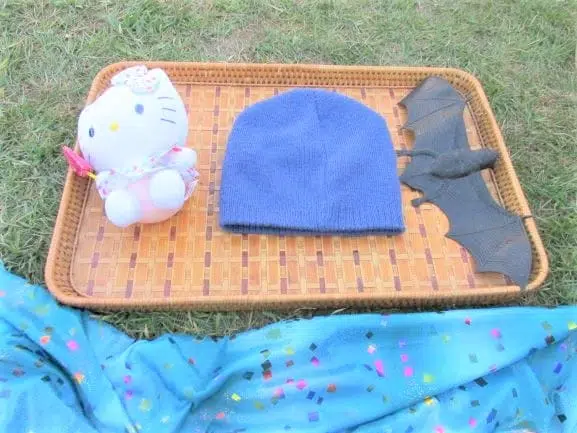
Then they open their eyes, and you remove the sheet. What has vanished!?
This is really brought to life even more if you can get your hands on a real magic wand that really makes a noise as well, a bit like this one:
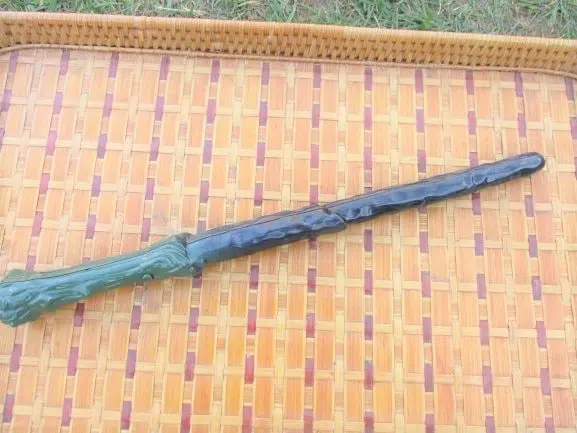
13.Missing Child Game
Resources – nothing
You can have hours of fun with this game.
Everyone sits in a circle. They close their eyes. The adult taps one child on the shoulder. They stand up and go and hide somewhere, for example round the corner.
Then everyone opens their eyes, and try to guess who has gone missing. Great for eye contact, and trying to remember who is around them.
14.Mystery Object
Resources – feely bag, one mystery object (of your choice)
The idea is that in a circle, you pass round the feely bag and every child holds it for a few seconds and tries to guess what’s in it. Then they pass it to the next person. Everyone has one guess, for example: ‘I think it’s an orange.’ ‘I think it’s a ball.’ ‘I think it’s an apple.’ Etc
When you get to the end, before you look in the bag, ask the children to point to the person they think said, for example, ‘a ball,’ ‘an orange.’ This gets them all really focussing on what the others say and trying to develop memory.
Then reveal what was in the bag!
15.Copy The Rhythm
Resources – nothing, or you can use rhythm sticks or drums
This one is a bit harder than some of the other games.
If you are not using rhythm sticks or drums, you can just do it with clapping.

The easier way of doing it is this – pick a theme, for example food. Then one child thinks of a food and claps (or hits) the word, e.g ba-na-na! (That would be three hits!) Everyone copies.
Then the next child picks a food and hits it.
The harder way of doing the game, is the first child just hits the sticks together in a rhythm (it could be anything). Then everyone tries to copy. This is one of many rhythm sticks games that you can check out here.
Then the next person goes.
Have a go of the easy version first, and if they are good at this then go on to the hard version.
16.Copy The Instrument
Resources – two lots of about four instruments.
This is an excellent early phonics games, which develops listening and memory.
Have one child in the middle of the circle, with four instruments in front of them. The adult has the same four instruments, but goes and hides somewhere.
Play one instrument and see if the child can copy the same instrument.
You can make this harder by trying to copy the instrument and copy the rhythm.
Harder again would be copy two instruments, or copy two instruments and copy the rhythm also!
17.Journey Sticks
Resources – Sticks, objects you find on a journey
These are a beautiful natural resource and great for memory.
The idea is that if you go on a trip with your children you find objects on the way and collect them. When you get back home or to school/nursery or your home you stick these objects to a long stick. This stick becomes your ‘journey stick’. It offers memories of what you saw and did.
It is also a great way of getting children to talk about their memories. Research suggests there is a strong link between vocaulary and memory acquistion. (Source)

18.Poems And Chants
Resources – nothing
Some simple chants and poems are great to learn by heart so you can recite them. It really helps if they repeat a lot, or if you have actions to bring it to life.
19.Number String
Resources – Either nothing, or you could have number cards.
In a circle, the first child says a number, e.g. ‘5’. The next child will have to say that number, ‘5’, and then say a number of their own, e.g. ‘3’. Then the next child says, ‘5,3…etc’
Keep building it up like this.
An easier way to do this is to all use number cards. The first child takes out a number and puts it in a box. Then the next person builds on this etc.
20.Journey Maps
Resources – Some paper, pens etc
This is great to do as an activity after you have been on some kind of adventure. At home it could be a walk to the park. Or it could be walk around school, or a treasure hunts round the outside. You could even do a map of your route to school.
The activity is that you then quite simply draw a map of where you have been. Put all the features on that you can remember. Great for generating talk, and remembering recent events in your life.
Maps like this are also great to use with story stones, to imagine stories and act them out.
21.Missing Words Out Of Songs
Resources – nothing
This one is great for listening skills as well as memory.
Sing simple songs, such as Twinkle Twinkle, or The Wheels on the Bus. At key moments leave out a word. See if they notice, and see if they can fill in the missing word. For example:
Twinkle twinkle little star,
How I wonder what you …
This can be good for rhyme as well, and a simple way of filling in rhyming strings.
22.Copy The Sequence
Resources – nothing
This one is great for memory, and also eye contact, which is a huge target for most children.
The idea is that the first person in the circle will tap three parts of the body in a sequence with their hands. For example, it could be ‘head, knees, feet.’ Then everyone tries to copy.
Then the next person goes: it could be ‘tummy, chest, shoulders.’ Everyone copies again.
Keep going like this.
This game can be simplified. If they are having problems, slow it down, and repeat each sequence several times. A simpler way of doing the game is to just touch one part of the body, but do it three times.
Conclusion
Honestly, these are the best memory tries I have ever tried with children aged 3-5. With just a few simple resources you can really develop their memory skills, and that will have a big effect on many other areas of their learning.
READ MORE
